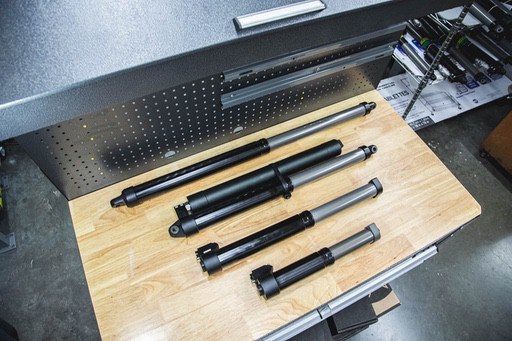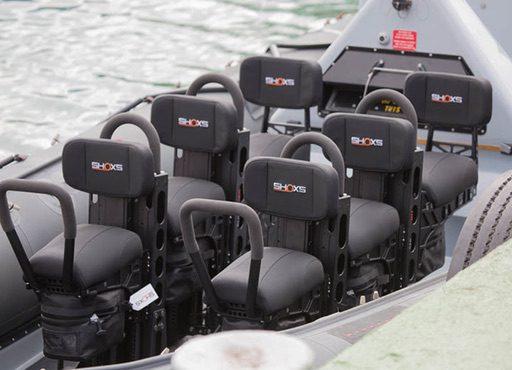-
United Safety & Survivability Corporation
101 Gordon Drive
Exton, PA 19341, United States - 610-265-3610
- info@shoxs.com
You have no items in your cart, add some on the products page.

Imagine a car speeding towards a brick wall. The average force (and acceleration) required to bring a moving body to rest is inversely proportional to the stopping distance. The ability of a shock-mitigating device to lessen an impact and ensure a smooth ride is tied to its stopping distance. It’s the equivalent of gently applying the brakes on the car, allowing it to roll to a halt over some distance.
We gain further insight by considering the definition of acceleration: the rate of change of velocity with respect to time. When a boat collides with a wave it undergoes a velocity change due to its motion relative to the water’s surface, and so the acceleration will depend on the size of that change and inversely depend on the time over which it occurs. This suggests the two main approaches to lowering impact severity: reduce the impact velocity or increase the time duration of the event.

On the water, a boat’s hull design, speed, and the sea-state are the dominant factors that dictate the velocity change during a wave slam. This change is thus reduced by improved hull design, slowing down, and avoiding poor conditions. These preventative measures lie at the heart of any shock-reduction strategy, but impacts cannot be eliminated entirely. In certain cases, speed cannot be reduced, waves cannot be avoided, and even the most experienced operator can be caught off-guard.
Shock mitigating equipment is designed to increase the time duration of each impact. The longer it takes to undergo the impact velocity change, the smoother the ride will be, and adding suspension travel to a shock-mitigating device is a sensible way to achieve this. It’s akin to giving the imaginary car more braking distance before the wall.

A longer deceleration leads to lower average forces. This explains why a 1” platform of vibration-mitigating foam is inferior to a 4” travel suspension system when it comes to mitigating shocks. Likewise, a 4” travel suspension will be outperformed by its 10” counterpart. The principle applies to impacts in any direction, including lateral. If only a short suspension travel distance is provided, a proportionate level of shock-mitigation can be expected.
Of course, there are space and weight limitations on any boat, and ergonomics must be a top priority. Operators must interact with controls, maintain a low profile, and avoid sacrificing their sightlines. But when it comes to shock-mitigation, bigger really is better, and long-travel suspensions will yield the best results.
